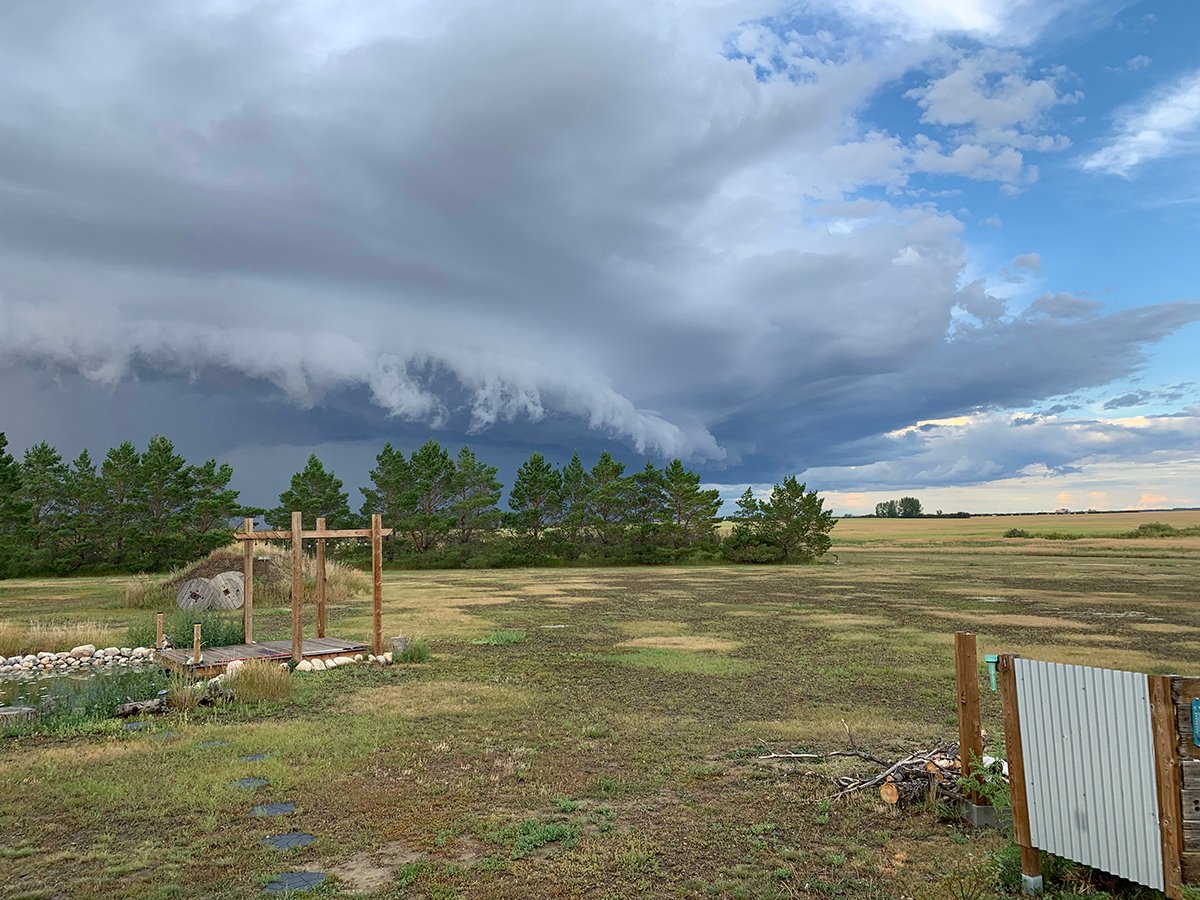Stan Wiebe, who uses drainage tiles extensively on the farm he operates with his father and brother, said drainage tiles have drastically improved their canola yields.
He told a meeting held during Manitoba Ag Days in Brandon on Jan. 18-20, that 2005 was an extremely wet year in the MacGregor area.
A canola field with tiles yielded more than 53 bushels per acre that year while the non-tiled canola produced eight bu. per acre.
He calculated that yields have increased 15 to 20 percent for all crops since they installed drainage tiles on their first field in 1998.
Read Also

Storm dynamics and extreme rainfall
Besides moisture, instability and orographic lift, the next biggest factor that contributes to heavy or extreme rainfall is storm dynamics.
“That’s an average,” Wiebe said. “In 2005, we had a four to five fold increase in canola. If you get an extra 40 bu. per acre in canola a few times, that (is significant).”
The Wiebes have since installed 5,200 acres of tile drainage on their farm, placing the perforated PVC pipe 15 metres apart for a cost of $700 to $800 per acre.
“Potentially, in extreme (wet) situations, the money could be made back in a couple of years,” Wiebe said. “But I would never say that to people because then you’re expecting to have those kind of flood years every year.”
The Wiebes took a chance on tiling in 1998 because of excessive water retention in a layer of clay 60 centimetres to 1.5 metres below the topsoil.
“That’s really the reason we have an issue,” he said.
“Our clay level is quite shallow… and when that profile is filled up (with water), there’s no oxygen in the soil. It’s completely saturated and the roots begin to die.”
Wiebe said heavy rain is common during Manitoba summers.
A significant rain, which he categorized as 25 to 50 millimetres, occurs every year in June near MacGregor, while a 50 to 125 mm rain occurs once every three years during the growing season.
Tiles have become a substantial enterprise in Manitoba in the last 10 years, with three companies now digging trenches to install the perforated pipe.
Potato producers are their main customers in Manitoba, but the practice is more widespread south of the border.
Ross Johnston, co-owner of Aggasiz Tile Drainage in Mayville, North Dakota, said his company has tripled in size since 2005.
Johnston and his 11 employees installed 4,000 acres of tile in North Dakota last year, but he’s not sure how much of the land in the state’s Red River Valley now has drainage tile.
“If I was to guess, we haven’t even hit one percent,” he said.
However, it is expanding rapidly thanks to word of mouth.
“You can call it word of mouth, but I call it drive by sight…. Two years ago (producers) were probably calling their neighbour every name in the book for putting in drain tile. But they’ve seen the crop on (that land) for two years. Now it’s, ‘gee, maybe I should do that.’ ”
In an interview following his presentation, Wiebe said drainage tiling has a long way to go in Manitoba. One rural municipality may support it, while the neighbouring RM isn’t as keen.
“Not just tiling, but any kind of drainage. Whenever you change the flow or movement of water, people get anxious,” Wiebe said.
He would like to see a more consistent, co-ordinated approach to drainage in the province.
Shawn McCutcheon, reeve of the RM of Dufferin, said Manitoba was a water management leader in North America 40 to 50 years ago, but has since lost ground.
Wiebe said tiling reduces pressure on the municipal drainage system because a tiled field releases water more slowly following a heavy rainfall.
Peace of mind is another benefit, he added, because he knows his family has taken every step to ensure the crop will survive when it rains 75 mm overnight.
“We sleep well at night. There’s a lot less stress and that’s a hard one to put a dollar figure on.”
the Ontario experience
Tile was first installed in the 1800s by laying clay tile at the bottom of a trench.
Today, 10.6 million acres of agricultural land (45 percent of cropland) is tile drained in Ontario.
New technology was developed in the late 1960s and early 1970s, such as the tiling plow, laser levels and rolls of perforated plastic pipes. They replaced tile and concrete and made tiling easier, faster and cheaper.
Installation cost 63 cents per foot in 2009.
Perforated pipe is typically installed 11 metres (35 feet) apart in corn and soybean fields.
Tile drainage improves soybean yields by 22 percent, corn by 40 percent and wheat by 36 percent.
Source: Ontario agriculture ministry and Land Improvement Contractors of Ontario















